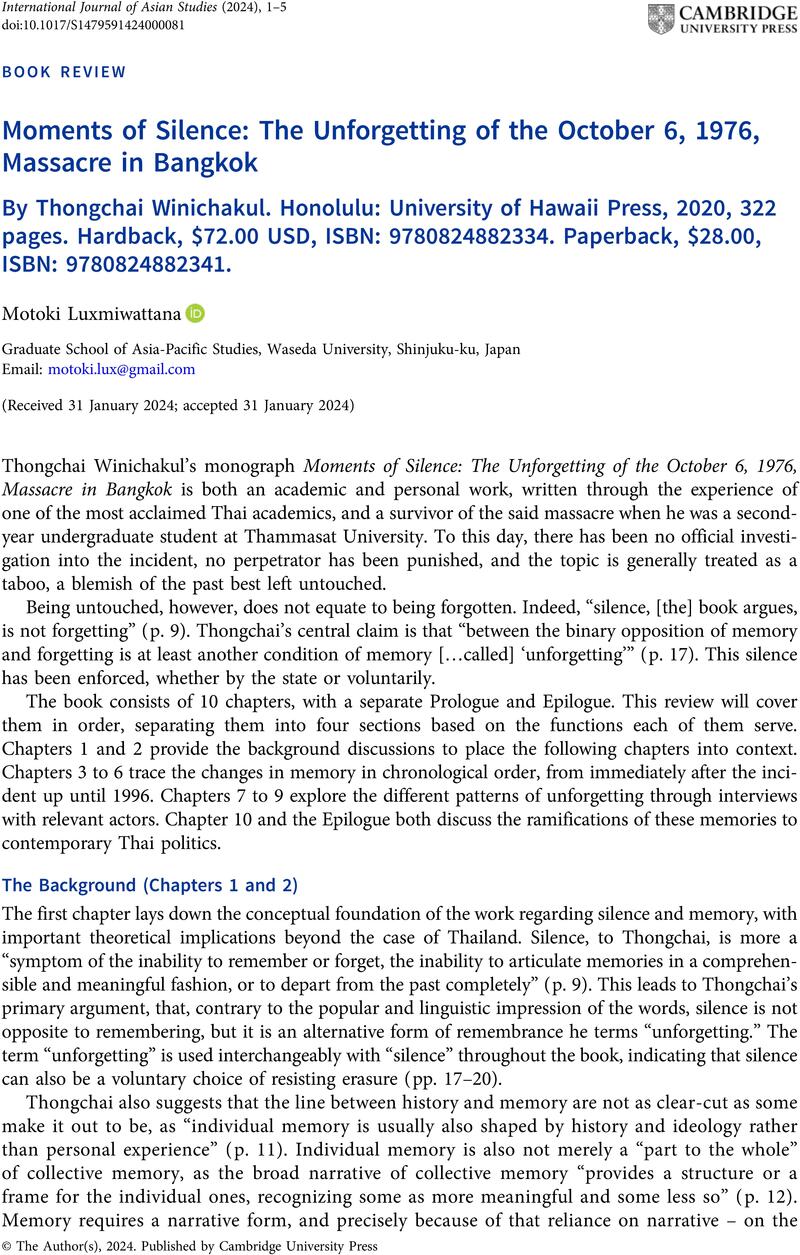Kongkirati, P. (
2005).
Lae Laew Khwam Kluean Wai Kor Prakot: Kan Mueang Watthanatham Khong Nak Suksa Lae Panyachon Korn 14 Tula [And thus the movement emerges: cultural politics of students and intellectuals prior to 14 October]. Bangkok: Thammasat University Press.
Google Scholar 